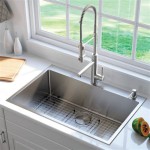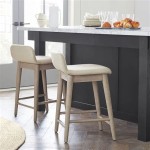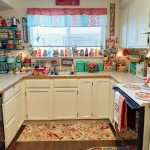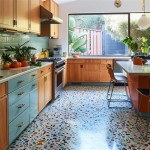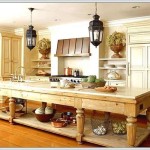Adhesive Wall Tiles for Kitchen: A Comprehensive Guide
Adhesive wall tiles have emerged as a popular and accessible option for kitchen renovations and upgrades. Their ease of installation, variety of designs, and cost-effectiveness make them an attractive alternative to traditional tiling methods. This article provides a comprehensive overview of adhesive wall tiles for kitchens, covering their types, benefits, installation process, maintenance, and considerations for selection.
Types of Adhesive Wall Tiles
Adhesive wall tiles are broadly categorized based on their base material and adhesive type. The most common types include:
Peel and Stick Tiles: These tiles consist of a decorative surface, usually vinyl, PVC, or a composite material, backed with a pre-applied adhesive layer covered by a protective film. The installation process involves peeling off the film and adhering the tile directly to the wall. Peel and stick tiles are generally the most budget-friendly and easiest to install.
Gel Tiles: Gel tiles feature a three-dimensional gel or epoxy resin surface, which provides a realistic tile or stone appearance. The adhesive backing is similar to peel and stick tiles, offering a convenient installation process. Gel tiles are known for their durability and resistance to moisture and heat, making them suitable for kitchen backsplashes and accent walls.
Self-Adhesive Metal Tiles: These tiles are constructed from thin sheets of metal, such as stainless steel, aluminum, or copper, bonded to an adhesive backing. Metal tiles offer a sleek and modern aesthetic and are resistant to corrosion and heat. They are often used as accent features or for creating a focal point in the kitchen.
Tile Stickers: While not technically tiles, tile stickers are thin, self-adhesive vinyl sheets designed to mimic the appearance of traditional tiles. They are a cost-effective way to update the look of existing tiles without removing them. Tile stickers are available in a wide range of patterns and colors, but their durability and heat resistance may be limited compared to other adhesive tile options.
The selection of adhesive wall tiles should be based on the desired aesthetic, budget, and the specific requirements of the kitchen environment. Consider factors such as moisture exposure, heat resistance, and ease of cleaning when making a decision.
Benefits of Using Adhesive Wall Tiles in the Kitchen
Adhesive wall tiles offer numerous advantages over traditional tiling methods, contributing to their increasing popularity among homeowners and renters alike.
Ease of Installation: The primary benefit of adhesive wall tiles is their simple and straightforward installation process. Unlike traditional tiles, which require mortar, grout, and specialized tools, adhesive tiles can be installed with minimal tools and experience. The peel and stick or self-adhesive backing eliminates the need for messy adhesives and grout, making the installation process faster and cleaner.
Cost-Effectiveness: Adhesive wall tiles are generally more affordable than traditional tiles and the associated installation costs. The savings come from the reduced material costs (no mortar or grout needed) and the elimination of professional installation fees. This makes adhesive tiles an attractive option for budget-conscious homeowners or those looking for a quick and inexpensive kitchen upgrade.
Variety of Designs: Adhesive wall tiles are available in a wide range of colors, patterns, textures, and materials, allowing homeowners to achieve diverse aesthetic styles. Whether seeking a classic subway tile look, a modern geometric pattern, or a rustic stone finish, there are adhesive tile options to suit various design preferences. The extensive selection allows for creative customization and personalized kitchen decor.
Removability: Many adhesive wall tiles are designed to be removable without causing significant damage to the underlying wall surface. This is a significant advantage for renters or homeowners who may want to change their kitchen decor in the future. Removability allows for temporary installations or seasonal updates without the permanence of traditional tiling.
Moisture and Heat Resistance: Certain types of adhesive wall tiles, such as gel tiles and metal tiles, offer excellent resistance to moisture and heat. This makes them suitable for use in kitchen backsplashes or areas near the stovetop. However, it's important to select tiles specifically designed for kitchen environments to ensure optimal performance and longevity.
While adhesive wall tiles offer numerous benefits, it is important to consider their limitations, such as potential durability issues in high-traffic areas or under extreme temperatures. Proper preparation and installation are crucial for maximizing the lifespan and performance of adhesive tiles.
Installation Process for Adhesive Wall Tiles
The installation process for adhesive wall tiles is generally straightforward, but proper preparation and attention to detail are essential for achieving a professional and lasting result. The following steps outline the recommended installation procedure:
Surface Preparation: The first and most crucial step is to thoroughly clean and prepare the wall surface. Remove any existing wallpaper, paint flakes, or debris. The surface should be smooth, clean, dry, and free of grease or oil. For painted surfaces, sand lightly to create a slightly rough texture that will enhance adhesion. Wipe down the wall with a damp cloth and allow it to dry completely.
Measuring and Planning: Before starting the installation, carefully measure the area to be tiled and plan the layout. Use a level and measuring tape to mark guidelines on the wall, ensuring that the tiles will be aligned correctly. Consider the placement of electrical outlets, windows, or other fixtures that may require cutting or trimming the tiles. It is often helpful to do a dry run by laying out the tiles on the floor to visualize the final arrangement.
Cutting the Tiles: Adhesive wall tiles can be easily cut using a utility knife, scissors, or a tile cutter, depending on the tile material. Use a straight edge for precise cuts and score the tile surface before snapping it along the score line. For more intricate cuts around outlets or corners, use a jigsaw or coping saw. Always wear safety glasses and gloves when cutting tiles.
Applying the Tiles: Peel off the protective film from the adhesive backing and carefully align the tile with the marked guidelines on the wall. Press the tile firmly against the surface, starting from the center and working outward to eliminate any air bubbles. Ensure that the tile is properly aligned with adjacent tiles, leaving a small gap for expansion and contraction. Repeat this process for each tile, working systematically across the wall.
Sealing and Finishing: After installing all the tiles, use a sealant or caulk to fill any gaps around the edges of the tiled area or around fixtures. This will help prevent moisture from penetrating behind the tiles and protect the underlying wall surface. Wipe away any excess sealant with a damp cloth. Allow the sealant to dry completely before using the kitchen area.
Troubleshooting: If any air bubbles appear after installation, use a pin or needle to puncture the bubble and gently press the tile against the wall. If a tile becomes misaligned, carefully peel it off and reapply it in the correct position. For stubborn adhesive residue, use a mild adhesive remover to clean the wall surface.
Proper installation is essential for ensuring the longevity and performance of adhesive wall tiles. Taking the time to prepare the surface, plan the layout, and apply the tiles carefully will result in a professional and aesthetically pleasing kitchen upgrade.
Maintenance and Cleaning of Adhesive Wall Tiles
Regular maintenance and cleaning are crucial for preserving the appearance and extending the lifespan of adhesive wall tiles in the kitchen. The cleaning methods and maintenance practices will vary depending on the type of tile material, but the following guidelines offer general recommendations.
Regular Cleaning: Wipe down the tiles regularly with a damp cloth or sponge to remove dirt, grease, and spills. Use a mild, non-abrasive cleaner to avoid scratching or damaging the tile surface. Avoid using harsh chemicals, bleach, or abrasive scouring pads, as these can dull the finish or compromise the adhesive bond.
Removing Stains: For stubborn stains, such as food splatters or grease buildup, use a specialized tile cleaner or a solution of warm water and mild dish soap. Apply the cleaner to the stained area and let it sit for a few minutes before wiping it away with a clean cloth. For particularly difficult stains, a soft-bristled brush can be used to gently scrub the tile surface.
Preventing Moisture Damage: While some adhesive wall tiles are moisture-resistant, it is important to prevent prolonged exposure to water, especially in areas around the sink or stovetop. Wipe up any spills or splashes immediately and ensure proper ventilation in the kitchen to minimize moisture buildup. Check the sealant around the edges of the tiled area periodically and reapply if necessary to maintain a watertight barrier.
Protecting from Heat: While certain types of adhesive wall tiles are heat-resistant, it is advisable to avoid direct exposure to excessive heat sources, such as open flames or hot cookware. Use a backsplash or heat shield behind the stove to protect the tiles from direct heat and prevent damage to the adhesive bond.
Repairing Damage: If a tile becomes damaged or loose, it should be repaired or replaced promptly to prevent further damage to the surrounding tiles or the underlying wall surface. Use a strong adhesive specifically designed for tile repair or replace the entire tile if necessary. Clean the affected area thoroughly before applying the adhesive or replacing the tile.
By following these maintenance and cleaning guidelines, homeowners can keep their adhesive wall tiles looking their best for years to come. Regular care and attention will help preserve the appearance, prevent damage, and extend the lifespan of the tiles, ensuring a beautiful and functional kitchen space.

Shell Peel Stick Backsplash Wall Tiles

Self Adhesive Kitchen Wall Tiles Bathroom Mosaic Brick Sticker Peel Amp Stick Ebay

D C Fix Oriental Tiles Self Adhesive Vinyl Wall Pack Of 6 0 56sqm Diy At B Q

Jual An 3d Self Adhesive Wall Tiles Pattern Stickers Kitchen Kota Depok All Night Tokopedia

Kitchen Tile Stickers 12 Pieces Self Adhesive Sticker Waterproof Pvc Wall For Bathroom And

D C Fix Rustic Oak Self Adhesive Vinyl Wall Tiles Pack Of 6 0 56sqm Diy At B Q

Splashback Tiles Kitchen Adhesive Wall Tile Stickers Etsy

Subway Peel And Stick Self Adhesive Wall Tiles Homebase

Self Adhesive Backsplash Peel Stick Kitchen Tile Wall Stickers Shop Today Get It Tomorrow Takealot Com

Stick On Tiles Self Adhesive Peel Wall Go


